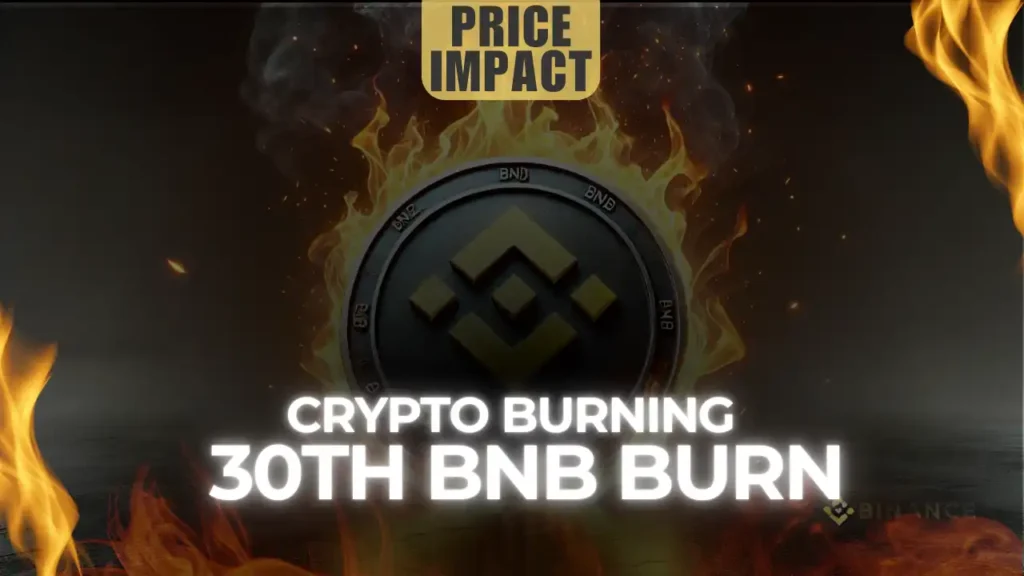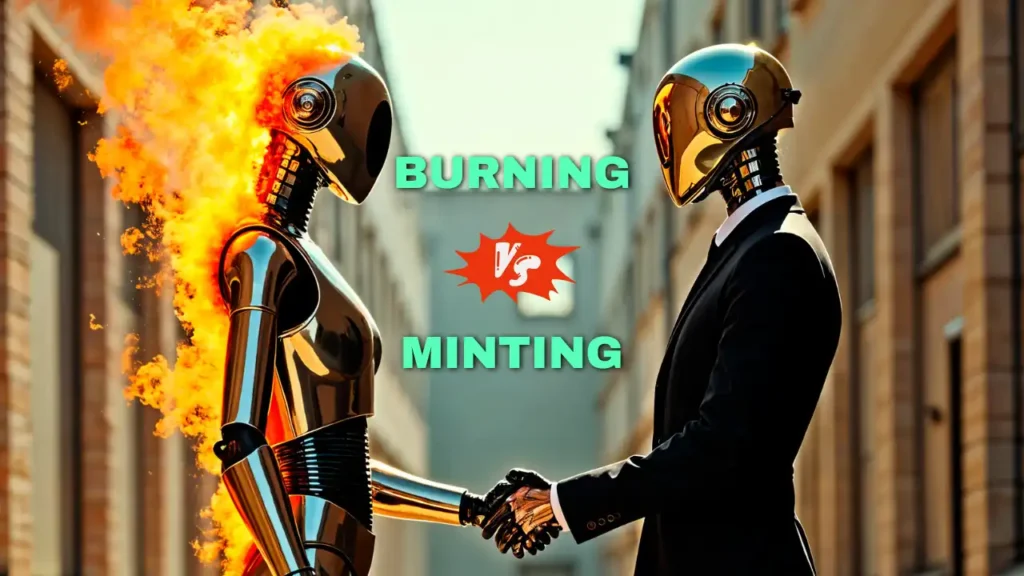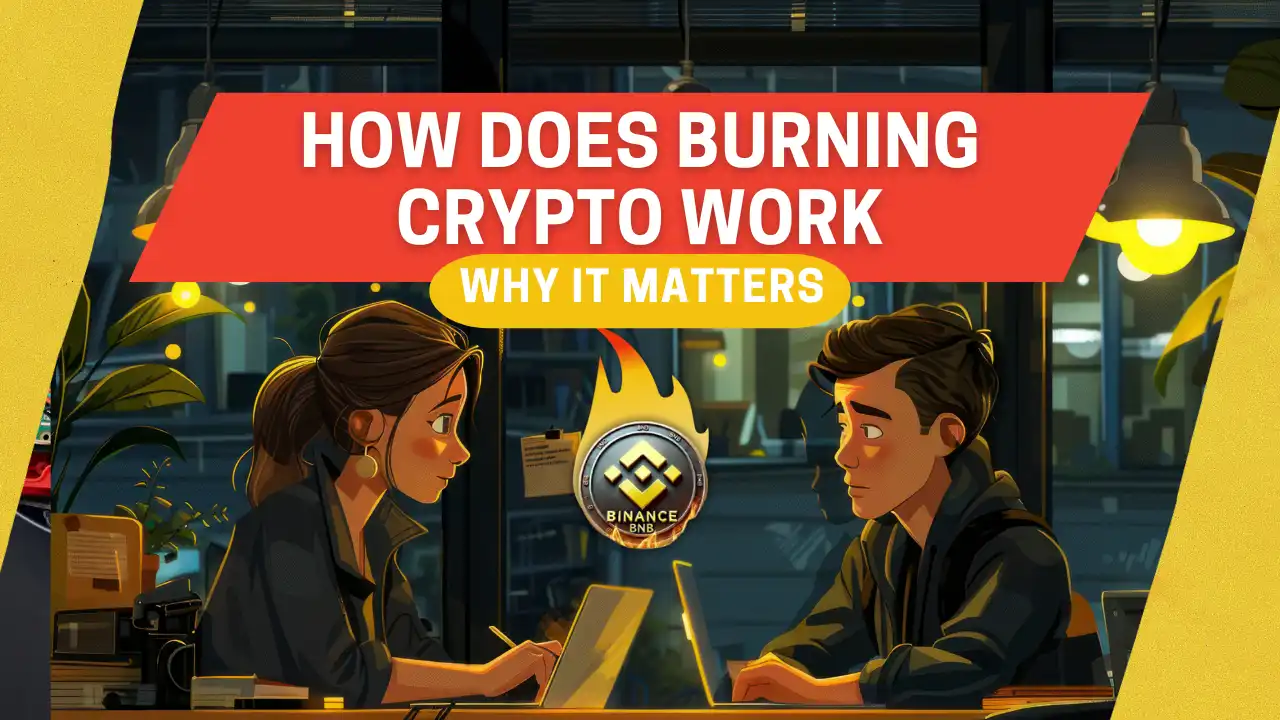Does Burnig Crypto increase value?
Let’s get straight to the point: How does burning crypto work? You’ve probably heard projects brag about burning tokens to “boost value,” but what does that actually mean for everyday investors like you and me? No fluff, no jargon—just plain talk.
Token burning is like tossing crypto into a digital incinerator, permanently wiping coins from existence to create scarcity. But here’s the raw truth: Burning doesn’t always guarantee profits. Let’s dive into the nitty-gritty of how it works, why projects do it, and whether it’s worth your attention.
(If you are intrested in learning about How to Analyze Crypto Tokenomics please click here )
Table of Contents
What Even Is Token Burning? Let’s Break It Down

Imagine throwing money into a volcano—except it’s crypto, and the volcano is a blockchain wallet no one can access. That’s token burning. Projects like BNB Chain and Ethereum use this tactic to reduce supply, hoping scarcity will drive prices up. For instance, in their 30th quarterly burn, BNB Chain torched 1.6 million BNB tokens (worth a jaw-dropping ~$1.16 billion!).
This wasn’t just a one-off stunt—part of the burn included a unique Pioneer Burn Program, where validators permanently locked away 110,000 BNB to support the ecosystem’s upgrade to BNB Chain Fusion. You can literally verify this burn on the blockchain using the transaction
ID 0x6c36e62d0c2c62a963c2410bb8feec49c5ce562bdfdac1fb2dbfa3c190be374c.
But here’s the kicker: Even after burning billions, prices don’t always skyrocket. Why? Because burning alone can’t outrun bad market moods or weak demand.
Token Burning vs Minting: The Crypto Tango

Think of burning and minting as opposites dancing in a risky tango
- Burning slashes supply (like BNB’s Auto-Burn system, designed to reduce its total supply to 100 million tokens).
- Minting prints new tokens (like Dogecoin’s infinite supply).
BNB Chain’s approach is a masterclass in balance. Their Auto-Burn mechanism adjusts burn amounts based on BNB’s price and network activity, ensuring transparency. Meanwhile, their real-time burn (via BEP95) destroys a fixed ratio of gas fees with every transaction—over 248,000 BNB burned this way so far.
Compare this to Bitcoin’s fixed 21 million cap, and you see why burns are a flexible tool for modern chains.
How Does Burning Crypto Work? 3 Tactics You’ll Actually Understand
Projects don’t just set tokens on fire—they use clever strategies. Here’s the scoop:
1. The “Buyback & Burn” Game (Binance’s Favorite)
Exchanges like Binance use trading fees to buy tokens from the market and burn them. It’s like a loyalty reward for holders: fewer tokens = higher prices theoretically. But in 2021, after Binance burned $393 million in BNB, prices fell. Why? Traders cashed out, proving hype alone won’t save a token.
2. Auto-Burn Mode (Ethereum’s Quiet Revolution)
Ethereum’s EIP-1559 upgrade burns ETH with every transaction. Imagine paying a toll where part of your fee vanishes forever. Since 2021, 3.5 million ETH (worth $10+ billion!) has been burned. Check Etherscan’s ETH burn chart to watch it happen live—it’s weirdly addictive.
3. Public “Graveyard” Wallets (For the Drama)
Some projects burn tokens in wallets everyone can see but no one can touch. Shiba Inu’s community, for example, burned 410 trillion SHIB (millions in value) to shed its “infinite supply” meme coin image. Prices spiked 30%… then crashed. Classic crypto chaos.
Does Burning Crypto Increase Value? 3 Real Stories (No Sugarcoating)
Case 1: Ethereum’s Slow Burn to Respectability
Ethereum’s EIP-1559 turned ETH into a deflationary asset during NFT mania. By 2023, ETH’s supply was shrinking. Did it moon? No. But it gave ETH street cred with big investors, making it less volatile than meme coins.
Case 2: Binance’s BNB Burn Backfire
Binance’s 2021 BNB burn made headlines—$393 million up in smoke. But prices tanked because traders sold the news. Long-term, though? BNB’s supply is down 20% since 2017, helping it stay in the crypto top 5.
Case 3: Shiba Inu’s Burn Party (Spoiler: It’s a Gimmick)
Shiba Inu’s community burns tokens like it’s a game. One burn destroyed 8.7 billion SHIB, spiking prices 30%… for two days. Without real-world use, these burns are just hype.
Token Burning and Deflation Benefits: Why Scarcity Isn’t a Magic Wand
Burning tokens is like going on a diet—you need a plan and discipline. Bitcoin’s fixed supply works because everyone treats it like digital gold. Ethereum burns to fuel its DeFi empire. But meme coins burning tokens? That’s like putting lipstick on a pig—it’s still a pig.
How to Burn Crypto Tokens (Spoiler: You Can’t… Unless You’re a Dev)
Unless you’re a project founder, you can’t burn tokens. But here’s what happens behind the scenes:
- Pick a Burn Method: Buyback, auto-burn, or public spectacle.
- Send Tokens to the Void: Use a verified burn address (check the blockchain!).
- Prove It: Share the transaction ID so everyone knows it’s legit.
For regular folks? Support projects with real utility, not just flashy burns.
ETH Burn Chart & Tools: Your Secret Weapon
Websites like Etherscan let you stalk ETH burns in real time. During NFT drops, the burn rate skyrockets—like watching a bonfire fueled by gas fees.
FAQs: Your Burning Questions, Answered
Does burning crypto increase value?
Sometimes. BNB’s $1.16B burn added credibility, but prices depend on demand. Shiba Inu’s burns? Just noise..
What’s token burning vs minting?
Burning deletes tokens (less supply), and minting creates them (more supply). Bitcoin doesn’t mint; Ethereum burns to balance minting.
What are advanced burn mechanisms?
Auto-burns (Ethereum’s EIP-1559), buybacks (Binance), or public “graveyard” wallets (Shiba Inu).
How does burning crypto work technically?
Projects send tokens to a wallet no one can access. The blockchain records it—transparent and permanent.
Can I burn tokens as an investor?
Nope. It’s a dev move. But back projects with smart burn policies.
What’s an ETH burn chart?
A live tracker (like Etherscan’s) showing ETH burned daily. Great for spotting trends!
Final Take: Should You Trust the Burn Hype?
Burns can be exciting but don’t fall for the glitter. Ask yourself:
- Is this project solving a real problem, or just burning tokens for clout?
- Are whales waiting to dump their bags post-burn?
- Does the token have actual utility beyond scarcity?
Allah Hafiz, friends! Stay skeptical, focus on fundamentals, and remember: Burns don’t build empires—utility does.
P.S. Craving more? Read My deep dive into Ethereum’s ETF Crypto Goldmine —get ready for unfiltered insights!


2 thoughts on “How does burning crypto work: A Bold take on Token Burning and Deflation Benefits ”